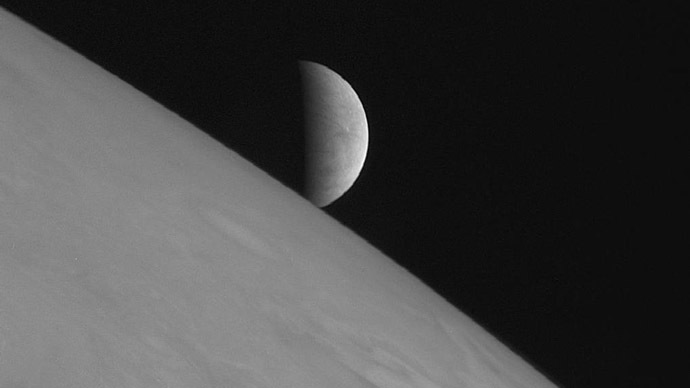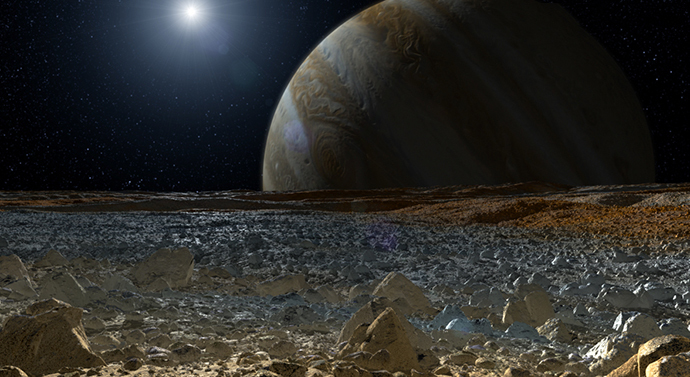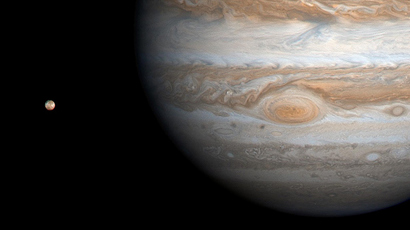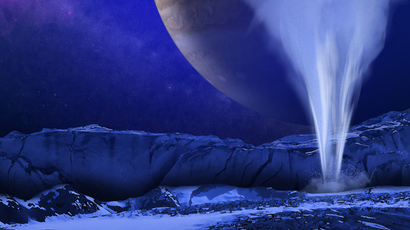Scientists discover Earth-like tectonics on Jupiter moon

Jupiter’s moon Europa could be quite Earth-like and even have traces of life, say scientists who discovered that Europa has ‘diving’ tectonic plates, the same type of surface-shifting geological activity as found on Earth.
“Europa may be more Earth-like than we imagined, if it has a global plate tectonic system,” one of the study’s authors, Simon A. Kattenhorn, says in a NASA press release.
He added that such a discovery may show that one of Jupiter’s 67 confirmed moons may bear traces of life.
“Not only does this discovery make it one of the most geologically-interesting bodies in the solar system, it also implies two-way communication between the exterior and interior - a way to move material from the surface into the ocean- a process which has significant implications for Europa’s potential as a habitable world.”
The article ‘Evidence for subduction in the ice shell of Europa’ was written by Kattenhorn together with Louise M. Prockter and published in Nature Geoscience on Sunday.
“We have been puzzled for years as to how all this new terrain could be formed, but we couldn’t figure out how it was accommodated,” said Prockter. “We finally think we’ve found the answer.”
Kattenhorn and Prockter claim in a new study they observed plate tectonics when studying Europa’s surface, which is about 40-90 million years old.
“We propose that Europa’s ice shell has a brittle, mobile, plate-like system above convecting warmer ice. Hence, Europa may be the only Solar System body other than Earth to exhibit a system of plate tectonics,” said the authors.

They made such a conclusion after studying the photographs of Europa captured by NASA’s Galileo spacecraft, which orbited Jupiter from 1995 to 2003.
Using those images they reconstructed a section of Europa of about 52,000 square feet (15,850 sq m) and saw the region changed over time with some surface features misaligned, or disappearing altogether, compared to images in earlier photographs.
“Europa has one of the youngest planetary surfaces in the Solar System, implying rapid recycling by some mechanism,” they wrote.
What they realized by analyzing Europa’s surface was evidence of material moving up from under the shell, but no evidence of what moved it back into the shell, and possibly into a large ocean below the ice.
A year ago, plumes of water vapor were seen erupting from Europa’s South Polar Region which suggested to astrobiologists that a robotic probe may be able to sample the moon’s subsurface.
In July, NASA said that Europa “continues to reveal itself as a dynamic world with compelling similarities to our own planet Earth.”
“Studying Europa addresses fundamental questions about this potentially-habitable icy moon and the search for life beyond Earth,” said Curt Niebur, Outer Planets program scientist at NASA Headquarters in Washington.
NASA said previous scientific findings point to the existence of a liquid water ocean located under the moon’s icy crust. This ocean covers Europa entirely and contains more liquid water than all of Earth's oceans combined.














